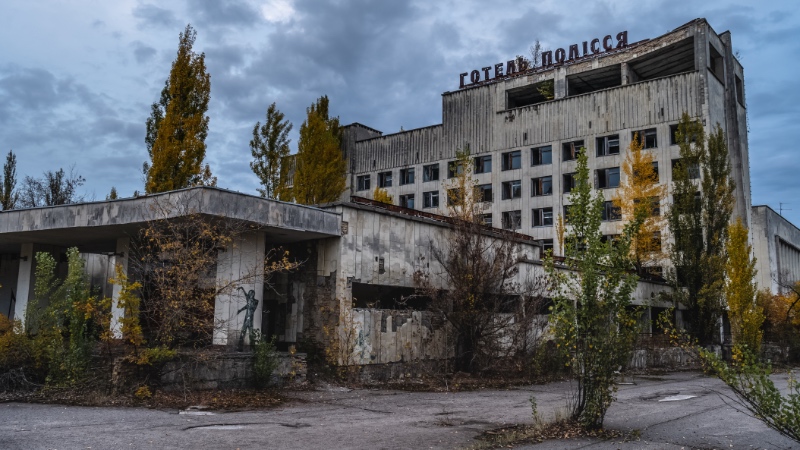The Chernobyl accident was one of the most devastating nuclear accidents in history. It changed the environment and your health forever.
1: What Is Chernobyl ?
Chernobyl is one of the most infamous nuclear disasters in history. It was an explosion at the Chernobyl Nuclear Power Plant that occurred on April 26, 1986 in the now-abandoned city of Pripyat, Ukraine. The accident released a massive amount of radioactive material into the atmosphere, resulting in an environmental disaster that still affects people today.
The accident was caused by a sudden surge in power that caused a series of explosions and a resulting fire that contaminated a large area of land in the Balkans. In response to the disaster, the Soviet Union established the Chernobyl Exclusion Zone, a 19-mile radius around the plant where people are not allowed to live. This area is still considered highly radioactive and is monitored carefully by the Ukrainian government.
The long-term effects of Chernobyl are still uncertain, but studies have shown that it can cause cancer, birth defects, and other health issues. Even today, the area around Chernobyl remains largely uninhabitable due to ongoing radiation, making it a potent reminder of the dangers of nuclear power.
2: How Did The Chernobyl Accident Happen?
The Chernobyl accident is one of the most catastrophic events in history and its effects are still felt today. On April 26th, 1986, a sudden power surge in the Chernobyl Nuclear Power Plant’s Unit 4 caused the reactor to explode, releasing a plume of radioactive materials into the atmosphere. The immediate aftermath was devastating; two workers were killed instantly, and thousands more were exposed to high levels of radiation. In the days that followed, more than 30,000 people had to be evacuated from the area surrounding the power plant.
The exact cause of the accident was never definitively established, but it is believed to be the result of a combination of human errors, design flaws, and violations of safety procedures. The reactor was poorly designed and lacked certain safety features that could have prevented or slowed the reaction. Additionally, the workers at the plant had been inadequately trained in safety procedures and were unaware of the potential risks associated with their work. As a result, they took risks that they should not have, leading to a catastrophic chain of events.
The disaster at Chernobyl had long-term consequences for the environment and public health. The radioactive materials released by the explosion contaminated soil and water supplies, leading to increased rates of cancer in those exposed to radiation. The effects of this disaster are still felt today; some areas near Chernobyl remain uninhabitable due to extreme levels of radiation.
Though it is impossible to erase the damage caused by this tragedy, there are steps that can be taken to ensure that similar events do not happen again in the future. Nuclear plants must be designed with safety as a priority and workers must be properly trained in order to minimize risks. It is only through vigilance and dedication to safety that we can prevent further disasters from occurring.

3: How Did Chernobyl Affect The Environment?
The Chernobyl disaster of 1986 had a devastating impact on the environment. The nuclear accident released large quantities of radiation into the air and water, contaminating the surrounding area with dangerous levels of radiation.
This radiation led to an increase in mutations, deformities, and illnesses in both plants and animals, as well as a decrease in biodiversity. Human health was also impacted, with an estimated 6 million people exposed to radioactive materials from the accident. In addition to the direct health impacts, the environment suffered from the massive evacuation of people from the area. The homes and businesses that were abandoned left behind chemical and radioactive contamination.
Deforestation was also a result of the disaster, with trees cut down to make room for roads and to create a buffer zone around the site. Finally, water contamination caused by the accident has had lasting impacts on the region. The Chernobyl disaster has left an indelible mark on the environment and its inhabitants that will be felt for generations to come.
4: What Are The Health Risks From The Chernobyl Accident?
The 1986 Chernobyl accident, which released a large amount of radioactive material into the environment, has had long-lasting effects on the health and wellbeing of those exposed to the radiation. The health risks associated with the accident can include an increased risk of cancer, developmental delays in children, and other serious health problems.
Cancer is one of the most common long-term health risks from the Chernobyl accident. Those exposed to radiation have an increased risk of developing certain types of cancer, such as thyroid cancer, leukemia, and breast cancer. The risk of cancer increases with the amount of radiation exposure and can even be passed down to future generations.
Children born after the Chernobyl accident may suffer from developmental delays due to their exposure to ionizing radiation. These delays can include physical and cognitive development, as well as hearing and vision problems.
Exposure to radiation can also cause other serious health problems, such as birth defects, impaired immune function, and cataracts. It is important for those who were exposed to the radiation at Chernobyl to be monitored for any signs or symptoms of these health risks.
The Chernobyl accident had a devastating impact on the people and environment in the region and the health risks associated with it are still being studied today. It is important to be aware of these risks in order to protect ourselves and our loved ones from any potential harm.

5: How Can You Avoid Being Exposed To Radiation From The Chernobyl Accident?
Avoiding exposure to radiation from the Chernobyl accident is critical for ensuring your safety and health. There are a few key steps you can take to reduce your risk of being exposed to radiation from the Chernobyl accident. First, stay away from the contaminated area.
The Chernobyl Nuclear Power Plant and other areas of the Chernobyl Exclusion Zone remain highly contaminated and should be avoided. Second, limit your consumption of contaminated food and water. Food grown in or near contaminated areas should not be consumed, and you should avoid eating wild game or mushrooms gathered in or near the exclusion zone.
Additionally, be careful when consuming fish caught in local rivers as they may contain high levels of radiation. Finally, if you visit Ukraine or Belarus, avoid visiting the contaminated sites, especially during times of high wind, as airborne particles of radioactive material can be inhaled. By following these steps, you can greatly reduce your risk of exposure to radiation from the Chernobyl accident.
6: What Should You Do If You Were In Chernobyl At The Time Of The Accident?
If you were in Chernobyl at the time of the 1986 nuclear accident, it is important to take safety precautions to protect yourself from radiation. Firstly, try and leave the area as soon as possible. If this is not possible, try to find the safest place near you such as a basement or a building with thick walls. Make sure to stay inside and away from windows.
Additionally, it is important to avoid eating any food or drinking any liquids that may have been exposed to radiation. If available, wear protective clothing such as a mask and gloves. Furthermore, after leaving the area, be sure to get tested for radiation exposure. Be honest with your doctor about your exposure to radiation and follow their instructions carefully.
Lastly, if you are experiencing any symptoms related to radiation exposure, such as a fever or nausea, seek medical attention immediately. Taking the right steps can help protect your health after being in Chernobyl during the nuclear accident.
7: How Can You Help Rebuild Ukraine After The Chernobyl Disaster?
Rebuilding Ukraine after the Chernobyl disaster is an ongoing mission that requires dedication and passion. It’s important to understand the impact of the disaster in order to determine how best to help. According to the World Bank, over 1,000 villages were impacted by the disaster and seven million people were still living in contaminated areas as recently as 2018.
In order to rebuild Ukraine, it is essential to provide healthcare and educational services for those affected. Financial support can go a long way towards providing medical and psychological aid to those who were injured or have suffered from the long-term effects of radiation exposure. Furthermore, poverty reduction initiatives can help families get back on their feet and provide them with the basic necessities for a better life.
Lastly, infrastructure reconstruction and improvement is necessary for Ukraine to be able to continue its economic growth. All these efforts require both financial and moral support from individuals around the world who are passionate about helping rebuild Ukraine after the Chernobyl disaster.
By donating money or volunteering your time to organizations that are dedicated to rebuilding Ukraine, you can be part of this incredible mission. Together, we can make a difference and help rebuild Ukraine into a safe and prosperous country.
Conclusion
The Chernobyl accident changed the environment and your health forever. It is important to know what you can do to help rebuild Ukraine after the disaster.




















